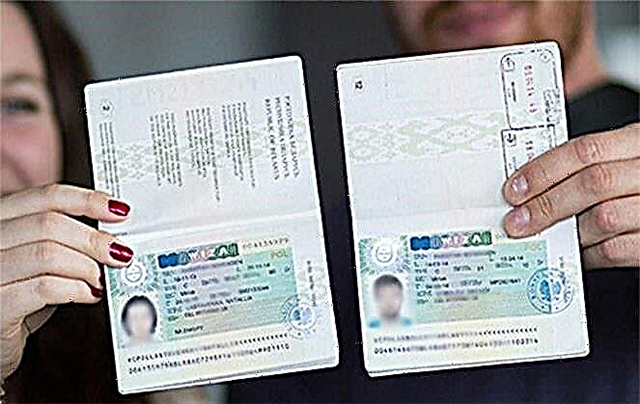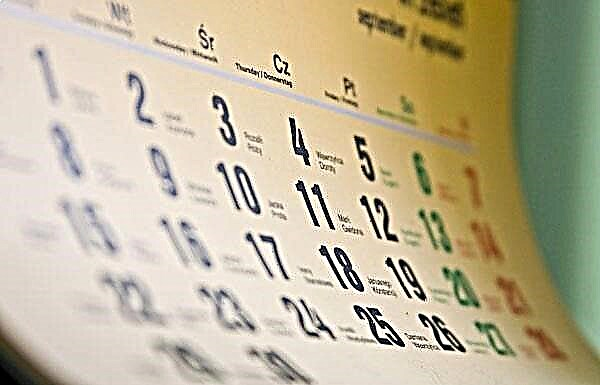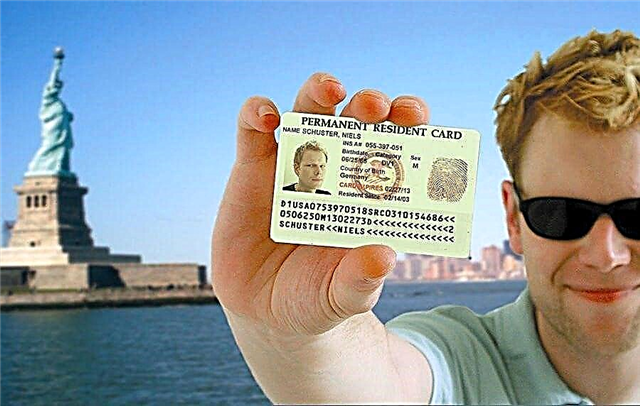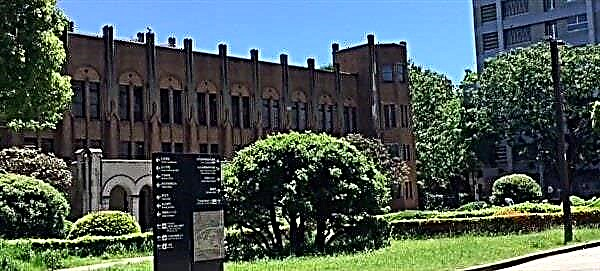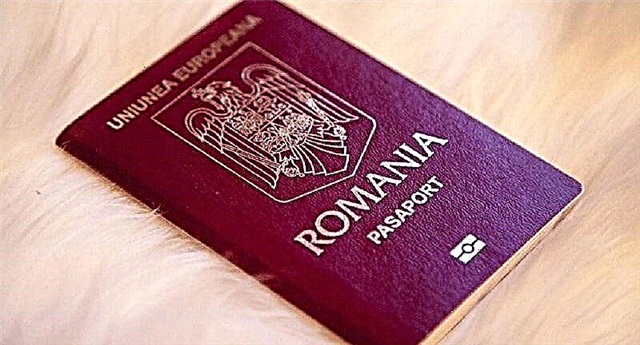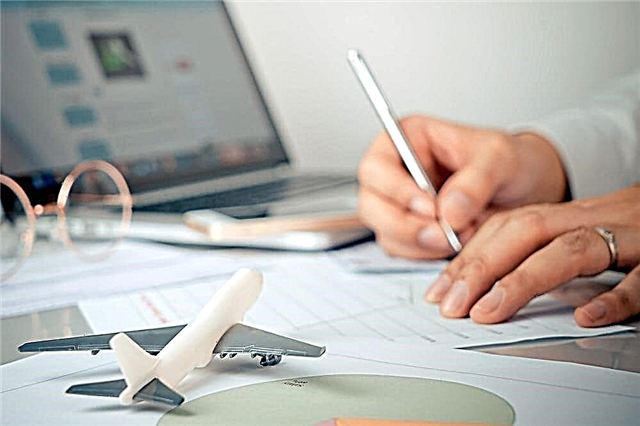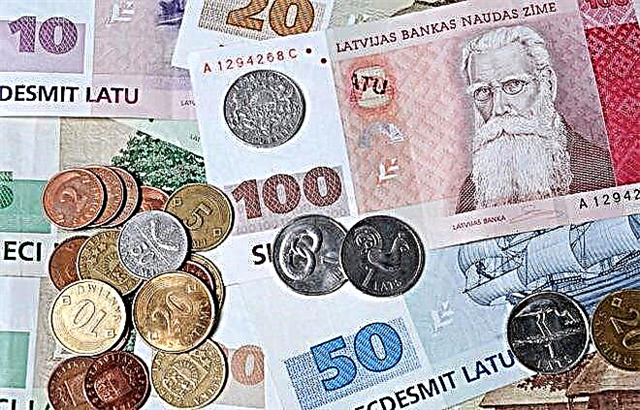The history of this small country in the Baltics throughout its entire length was determined by the ambitions of stronger neighbors. First, the ancient Russian principalities, then the Order of the Swordsmen, then the Commonwealth, Sweden, the Russian Empire, the Soviet Union. Everyone used their money here. In two small periods of independence, the Latvian state issued its own until it joined the European Union. Since the beginning of 2021, the official currency of Latvia is the euro. Since that time, the monetary policy is determined jointly by the European and Latvian central banks.

History of Latvian money
Archaeological excavations confirm the circulation of Roman coins of the 2nd century AD and Arab dirhams of the 9th century on the territory of Latvia. But this is the merit of the merchants. The Latvians did not have their own money until the declaration of independence in 1918.
- The ruble, although called Latvian, began to be printed in March 1919. When the national bank was established three years later, the first lat appeared ─ this was the name of the Latvian currency before the euro.
- A bargaining chip, the centime, appeared the following year. Banknotes were printed in England and Switzerland, and a large coin was minted there until 1940. Small from 1937 until its incorporation into the USSR, produced its own mint.
- At the end of 1940, the Bank of Latvia became a branch of a Soviet bank. At first, the lat was still in use, but since the beginning of 1941, the currency in Latvia is the Soviet ruble. However, not for long.
- Already in the fall, it was replaced by the Reichsmark, which held out for three years.
- At the end of 1944, the ruble restored the lost rights for more than forty years.
In 1990, the country declared independence and began to rebuild its own financial system. In 1992, the Latvian ruble was introduced, nicknamed "repshik" in honor of Prime Minister Einars Repshe, and in the next, the national currency of Latvia, lat, returned.
The coins were produced in Germany, with a denomination of 1 centime ─ in Norway, gold 1 and 100 lats - in Finland, and bimetallic 2 lats - in Great Britain. Joining the eurozone in 2021 was again marked by a change in money. Now the Latvian currency is issued in Germany.
Payment methods and ATMs
Latvia is very cozy and beautiful, especially Riga and Jurmala. The beauty of the Riga seaside is known far beyond the Baltic.
The country receives a significant portion of its revenues from the tourism industry. At the same time, tourists mainly come from Russia and the countries of the former USSR. Often, they and businessmen coming from all over the world have to change money in Latvia or at home in order to be able to have a good rest or to work fruitfully.
Latvia is now a fully European country with uniform credit and financial rules using the main currency, the euro. Cashless payments are encouraged, the number of ATMs is gradually decreasing, and the population of POS terminals is increasing.
You can pay with a bank card without any problems in the most seedy shop, even in the outback.
Of course, the commission will be minimal if the account is in euros and the card is issued by an international system. The most popular are EuroCard and MasterCard, VISA, American Express are quite willingly accepted, JCB, DINER'S CLUB, EUROCHEQUE are slightly less willing.
USD bills are accepted at ATMs. The withdrawal amount is limited to a maximum of € 400, and is converted at the rate set by the specific bank. Cash settlement is possible only with euro money.
Take a sociological survey!
Exchange rate
 In different years of the country's history, the Latvian lats exchange rate was tied to the German mark, SDR (from the English Special Drawing Rights, SDR, SDRs) and the euro. Today the exchange rate is of interest only to numismatists and those who have left lats - they are still accepted in exchange for euros.
In different years of the country's history, the Latvian lats exchange rate was tied to the German mark, SDR (from the English Special Drawing Rights, SDR, SDRs) and the euro. Today the exchange rate is of interest only to numismatists and those who have left lats - they are still accepted in exchange for euros.
It is easy to find out the current rate of the euro against the dollar, ruble and so on at any local bank branch or exchange office. Since the national currency of Latvia is the euro, before traveling, you can ask for quotes on the sites:
- Bank of Latvia,
- European Central Bank,
- Central Bank of the Russian Federation.
It may turn out that the Russian regulator offers a more favorable rate in relation to the dollar, pound, yen or other currencies that you have. And for sure the ruble exchange rate at home will always be the best. Therefore, it is always more profitable to buy euros for rubles in Russia.
Exchange options
You can exchange currency in Latvia at bank clearing centers and exchange offices, which can be found at airports, train stations, at large supermarkets. There are many of them in the main tourist areas.
There are so many signboards Valutas maiņa (this is the name for exchangers in Latvian) in the center of Riga that it seems as if the entire Latvian capital has turned into a platform for private persons exchanging currency. By the way, in the historical center the rate is always worse than in the rest of the city.
Currency exchange in Latvia in some exchange offices is not complete without a commission. Moreover, the course is set by the owners and can be very different from the official one.
There will always be a sign at the entrance with the selling (Pardod) and buying (Perk) rates. There are no restrictions on the amount of money. If it is over € 8,000, a passport is required. The cashier's check must be issued. Even Russian rubles are accepted here, but not at a very interesting rate.
As for Russian banks, only Alfa-Bank is represented in the country. Sberbank in Latvia has not yet started working.
Taxes and export of goods without duty
Latvian tax legislation has adapted the vast majority of the norms and requirements adopted in other EU countries. Value added tax (VAT) is high here ─ 21%.
Part of the cost (up to 12%) of the purchased goods can be returned, since there is a single tax free refund system for the eurozone. The conditions are as follows:
- permanent residence outside the EU;
- the purchase amount exceeds 30 lats (about € 44);
- the product has not been used and is exported within three months after purchase;
- the benefit does not apply to services.
There are about a thousand such outlets in Riga alone. To use Latvian money more economically, it is worth taking advantage of the Global Blue TAX FREE opportunities.
This requires:
- Find a store with a matching logo.
- Upon purchase, issue a Tax Refund check (expiration date 6 months). You will need a passport and filling out a special form. The goods are sealed; it is prohibited to open the packaging before passing customs control at the exit.
- At the border, personally present a check (the data specified in the checks and the passport must match), the purchases themselves and the passport. The customs officer will put a stamp on the check.
- Receive money in cash, on a bank card or by check.
If it happens at the airport, it is possible on the spot in the departure area. You can get tax-free at the same store on your next trip.
On the territory of the Russian Federation, the problem is solved at the points of payment available in Moscow, St. Petersburg, Yekaterinburg, Irkutsk, Kaliningrad and Vladivostok. Details can be found at www.globalblue.ru.
Currency rules
 The country has adopted a unified Customs Code for implementation. You can import money without restrictions in any form. Import and export of amounts exceeding the equivalent of € 10 thousand requires mandatory declaration when crossing a border that is external to the EU. Moreover, this obligation applies to any person carrying cash, regardless of whether he is their owner or not.
The country has adopted a unified Customs Code for implementation. You can import money without restrictions in any form. Import and export of amounts exceeding the equivalent of € 10 thousand requires mandatory declaration when crossing a border that is external to the EU. Moreover, this obligation applies to any person carrying cash, regardless of whether he is their owner or not.
Conversion into euros is carried out at the current exchange rate through Latvian lats. This also includes funds in checks, bills of exchange, bearer payment orders or in a form that gives the right to transfer to another person, as well as their blank forms.
The fine for violation of the requirement can go up to € 290 and more when it comes to confiscation of a part (up to 50%) of the undeclared amount.
Good to know before you travel
Russians in 2021 have every opportunity to travel to a neighboring country without any problems. There is little to do - to open the Schengen area.
To do this, you need to know how the Schengen visa is issued in 2021.
You just always need to know the local specifics, have an idea of how much and what kind of money to have with you.
The issues of conditions, living standards, peculiarities of Latvian mentality are discussed in the article “What is useful to know about life in Latvia”.
We have collected some of the most frequently asked questions and answered them.
- What currency is better to take to Riga or Jurmala? Of course, euros, because only they can be used to pay on a trip. All others will have to be changed at a rate that is usually unprofitable.
- Can I pay in euros or dollars? Euro currency only. No other cash is quoted.
- What is better to take to Latvia: a bank card or cash? We need both. Anyway, a small supply of cash before the first ATM is always needed. If your bank does not guarantee the withdrawal of funds with a minimum commission, it is worth taking more cash.
- How much money to take to Latvia? This is a serious question, but the answer is simple if the duration and program of stay in the country are determined. Much depends on the mode of travel, diet, city and place of residence. Food prices here are lower than in Germany, but in terms of rubles are higher than in Russia. Hotels are not cheap (20-25 euros), fuel is very expensive - 1.2 euros. If you use public transport, live in a hostel, and eat outside of a restaurant, you need € 100 per person per day. thirty.
- Is it possible to pay in Latvia with a Sberbank card? Yes, of course, only if it's Visa or MasterCard. And keep in mind that plastic with a ruble account will be expensive due to the double conversion.
Conclusion
Now you know what currency is in Latvia and understand how much money is required. Finally, a few tips:
- stock up on euros before arriving in Latvia and book a hotel in advance ─ it will be cheaper;
- several low-cost airlines fly to Riga ─ you can buy a ticket very inexpensively;
- in Latvia, you can pay with Russian bank cards, but it is better if they are in foreign currency, with an open account in euros;
- it is better to have some cash euros with you, not everything can be paid with cards.


